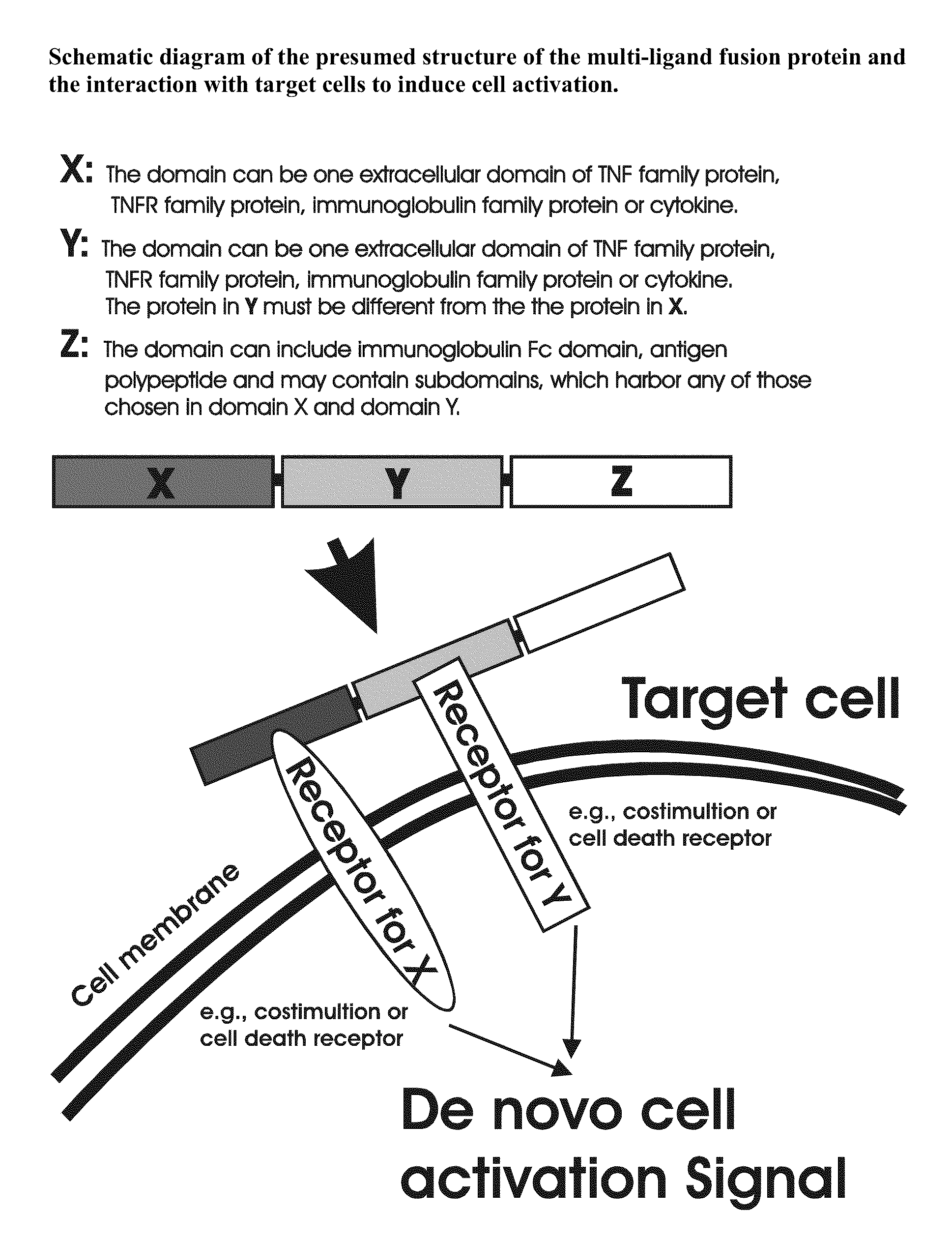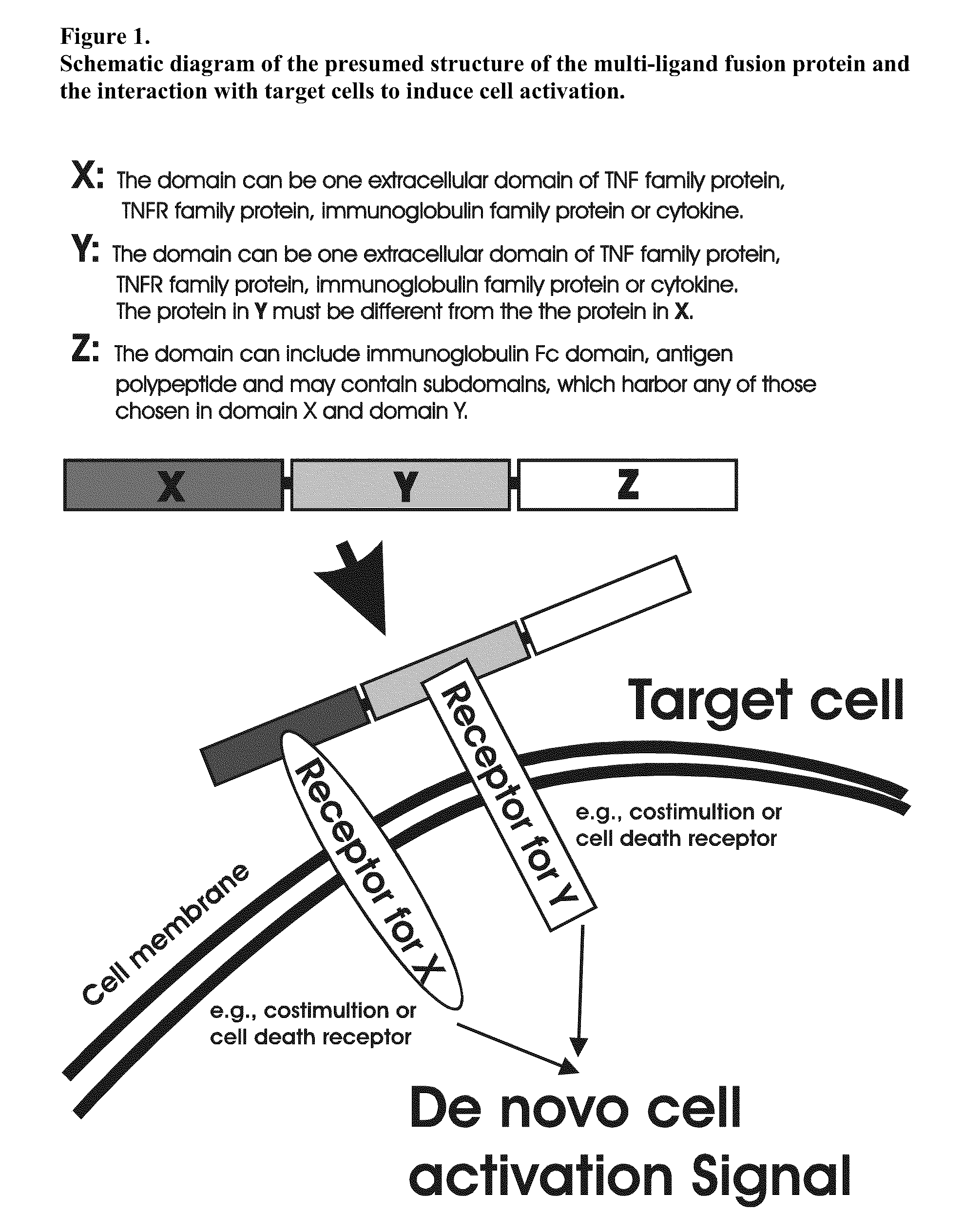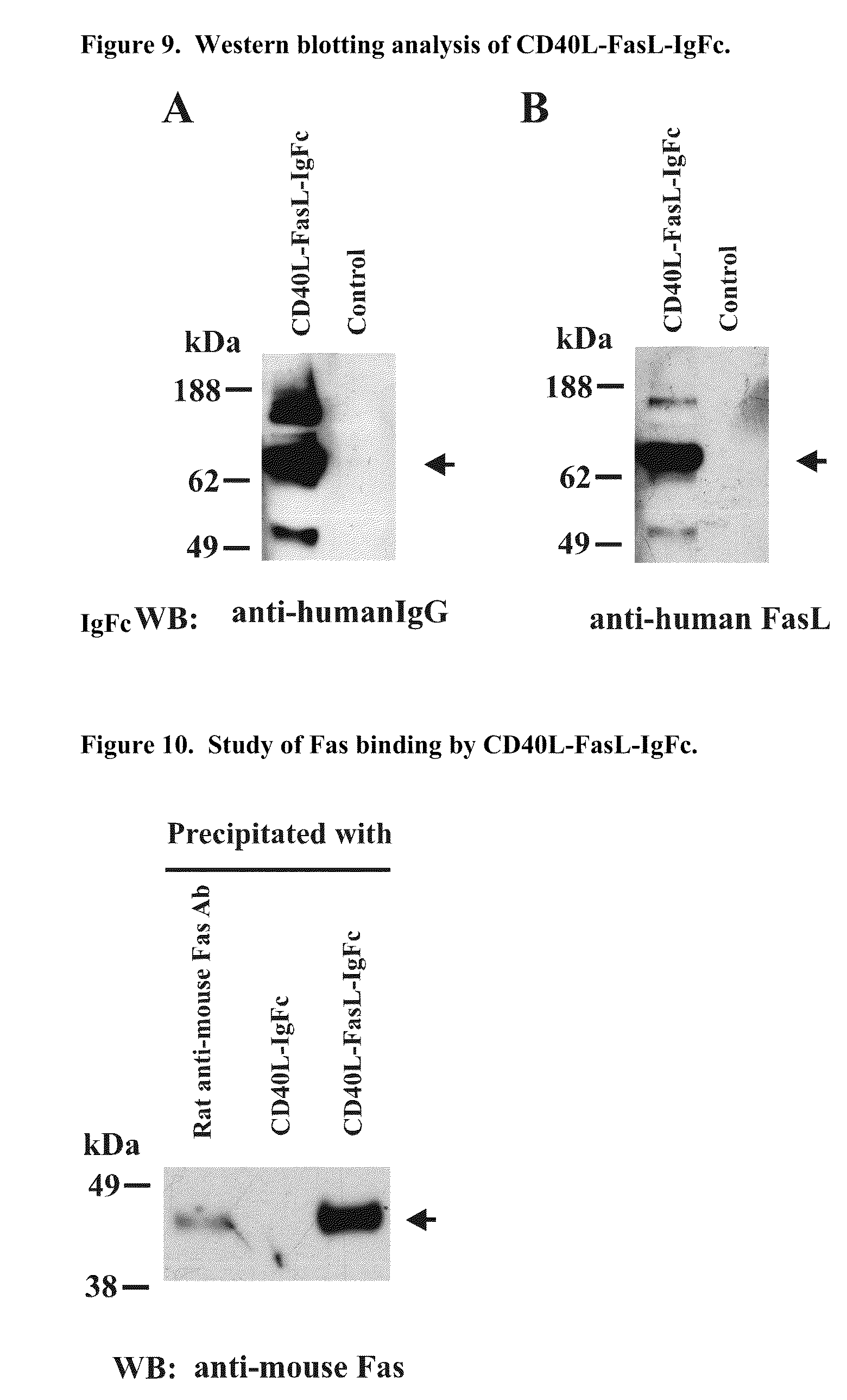Recombinant multiple domain fusion protein mitogens and use thereof for inducing enhancement or repression of antigen-specific immunity.
a fusion protein and mitogen technology, applied in the field of recombinant multiple domain fusion protein mitogens, can solve the problems of inability to induce repression of antigen-specific immunity, and inability to fully absorb the ligand and receptor,
- Summary
- Abstract
- Description
- Claims
- Application Information
AI Technical Summary
Benefits of technology
Problems solved by technology
Method used
Image
Examples
example 1
Methods and Materials
[0235]1. General Recombinant DNA Methods
[0236]Unless otherwise indicated, for generating nucleic acids encoding the fusion proteins of the present invention and for expression of the fusion proteins, routine techniques in the field of recombinant genetics were employed. Basic texts disclosing the general methods of use in this invention include Sambrook & Russell, Molecular Cloning, A Laboratory Manual (3rd Ed, 2001); Kriegler, Gene Transfer and Expression: A Laboratory Manual (1990); and Current Protocols in Molecular Biology (Ausubel et al, eds., 1994-2009).
[0237]For proteins, sizes are given in kilodaltons (kDa) or number of amino acid residues. Proteins sizes are estimated from gel electrophoresis, protein sequencing, amino acid sequences deduced from cDNA, or from published protein sequences.
[0238]Oligonucleotides that are not commercially available can be chemically synthesized according to the solid phase phosphoramidite triester Meaucage and Caruthers, T...
example 2
[0248]Construction of X:TNF-family extracellular domain polypeptide and Y: TNF-family extracellular domain polypeptide fusion protein.
[0249]Construction of CD40L-FasL-IgFc Plasmid DNA
[0250]To prepare the CD40+ B cell-specific CD40L-FasL-IgFc fusion protein mitogen gene construct, cDNAs encoding the extracellular domain of human CD40 ligand, extracellular domain of human Fas ligand, signaling sequence of oncostain M and CH2-CH3 domain of human IgG1 was generated by reverse transcriptase polymerase chain reaction (RT-PCR).
[0251]The extracellular domain of human CD40L [NM—000074, Homo sapiens CD40 ligand (CD40LG)] (amino acid residues 46-261) was amplified from human thymic RNA (Clontech B-D, Palo Alto, Calif., USA) using the following primers: forward 5′-CTTCATAGAAGGTTGGACAAGATA-3′ and reverse 5′-GAGTTTGAGTAAGCC AAAGGACGT-3′. The registered human CD40L message sequence is shown in FIG. 2.
[0252]The signal peptide of Oncostatin M [NM—020530, Homo sapiens oncostatin M (OSM)] (amino acid ...
example 3
[0310]Construction of a fusion protein comprised of X: immunoglobulin-family receptor ligand extracellular domain polypeptide, Y: TNF-family extracellular domain polypeptide fusion protein.
[0311]The B7-1(CD80) / B7-2(CD86)-CD28 pathway is the best-characterized T-cell co-stimulatory pathway. B7-1 and B7-2 are cell surface immunoglobulin family proteins expressed on macrophages and B cells. The CD28 signaling induced by B7-1 and B7-2 does not induce cell proliferation or cytokine secretion. It does, however, promote greatly enhanced activation events when T cells are simultaneously stimulated with T cell receptors. To determine if Fas signaling incorporate with CD28 signaling to elicit T cell proliferation, we constructed a B7-2-FasL-IgFc fusion protein. The result from the study of B7-2-FasL-IgFc was expected to address whether the conjugation of an immunoglobulin family co-stimulatory receptor ligand with a TNFR family death receptor ligand in the fusion protein mitogen formula (“X”-...
PUM
| Property | Measurement | Unit |
|---|---|---|
| w/w | aaaaa | aaaaa |
| concentration | aaaaa | aaaaa |
| concentration | aaaaa | aaaaa |
Abstract
Description
Claims
Application Information
 Login to View More
Login to View More - R&D
- Intellectual Property
- Life Sciences
- Materials
- Tech Scout
- Unparalleled Data Quality
- Higher Quality Content
- 60% Fewer Hallucinations
Browse by: Latest US Patents, China's latest patents, Technical Efficacy Thesaurus, Application Domain, Technology Topic, Popular Technical Reports.
© 2025 PatSnap. All rights reserved.Legal|Privacy policy|Modern Slavery Act Transparency Statement|Sitemap|About US| Contact US: help@patsnap.com



